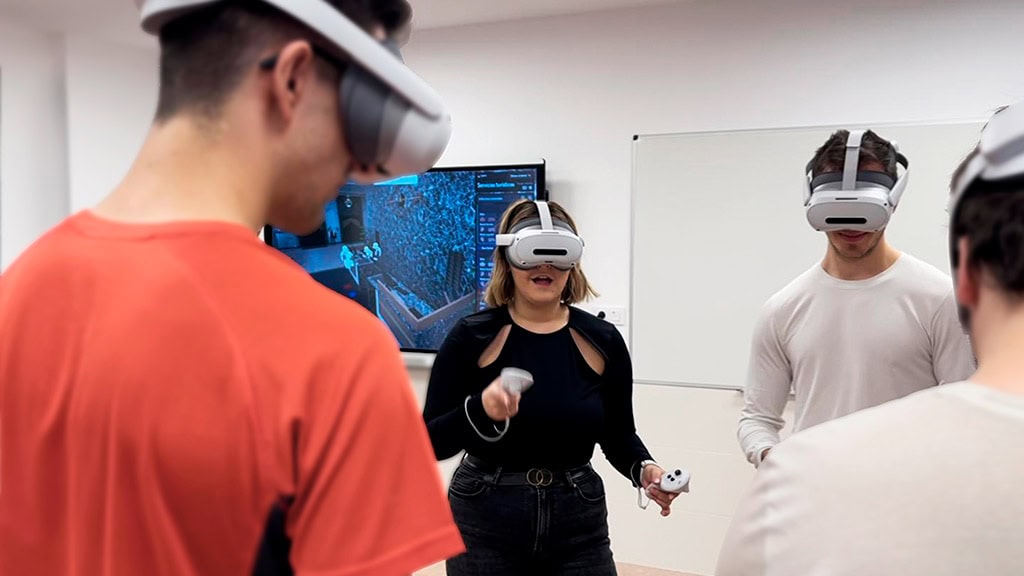Tourism is one of Spain’s most important economic drivers and, at the same time, one of the fastest-evolving sectors. Changes in customer expectations, the digitisation of processes, new trends in sustainability and the need to offer increasingly personalised experiences are forcing the education system to constantly adapt.
In this context, training in the field of tourism cannot be limited to imparting theory and must provide practical experiences that prepare future workers to function with ease in real-life situations.
With this premise in mind, CIFP Número Uno in Cuenca, a Centre of Excellence in Tourism, has led an innovative project in which four other vocational training centres have participated: CIFP Burlada, CIFP Manuel Antonio, CIFP Juníper Serra and CIFP de Hostelería y Turismo in Asturias. The project involves the development of a virtual reality simulator specialising in Tourist Services.
From theory to practice
The initial approach to the project was clear: to respond to the need to offer students practical tools to complement their theoretical training. The reality of the tourism sector demands professionals who are able to interact with customers, resolve unforeseen events and manage complex situations effectively. However, many of these skills cannot be fully trained in a conventional classroom.
This is where Virtual Reality comes into play. Thanks to the simulator, students now have the opportunity to immerse themselves in realistic scenarios that replicate contexts typical of the sector: customer service in a hotel, handling a complaint, coordinating a catering service or planning tourist activities. All this in a safe environment, where mistakes are not a risk, but an opportunity to learn.
For Mª Ángeles Filoso, project coordinator at CIFP Número Uno in Cuenca, the key lies in the impact it has on the students themselves: “Theoretical training is crucial, but sometimes insufficient to prepare students for the challenges of the world of work.” With the simulator, the gap between the classroom and the reality of the market is narrowed, and students gain confidence, motivation and security before entering the professional world.
A collaborative effort between teachers and technologists
The outcome of the project would not have been possible without the active involvement of the teaching staff at the five participating centres. The teachers contributed their knowledge of the sector and pedagogy to design the different use cases, ensuring that the simulator was not only a technological innovation, but also a useful tool aligned with educational objectives.
The teaching teams had to take on a multidisciplinary role, connecting real-life tourism experience with the possibilities offered by technology. In this regard, Saida María Gelpi, also a project coordinator, sums it up as follows: “A deep understanding of the sector is needed to enable them to design realistic and practical training scenarios, directly connecting education with professional demands. At the same time, solid digital skills are required to interact effectively with technological platforms, understand how they work and propose continuous improvements.”
The impact on student learning
The simulator has marked a turning point in the way students at these centres approach their learning. One of the main advantages is the possibility of training in a safe environment, where mistakes have no negative consequences and become valuable lessons. This safety, combined with the immersion of Virtual Reality, increases student confidence and improves knowledge retention.
Another fundamental aspect is motivation. Students do not simply receive information passively, but interact with dynamic environments that require their active participation. This methodology promotes more engaging learning, which generates greater commitment and participation. In addition, by working in realistic contexts, students develop cross-cutting skills such as decision-making, stress management and effective communication with clients.
This project is an inspiring example of how vocational training can be reinvented and adapted to the needs of a changing labour market. The combination of teaching experience, technological innovation and collaboration between centres has made it possible to create a tool with enormous potential for educational transformation.


